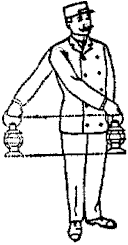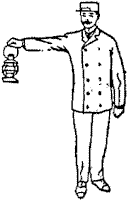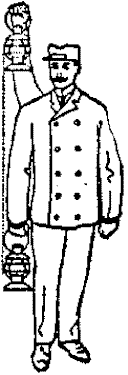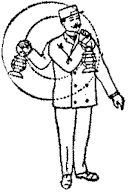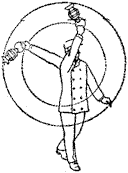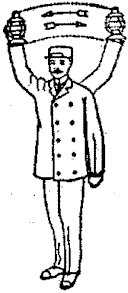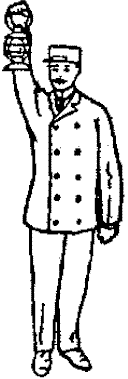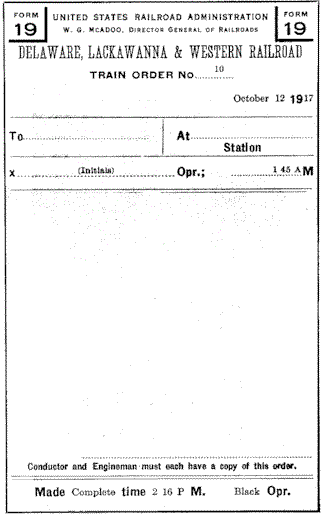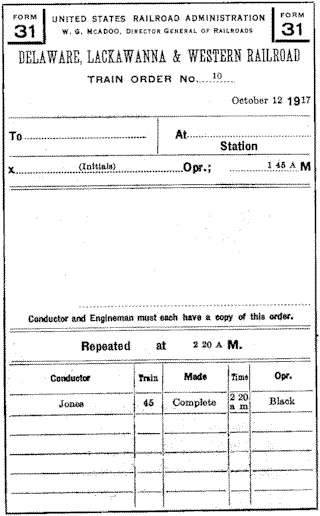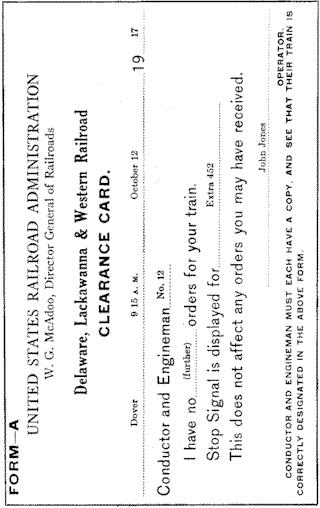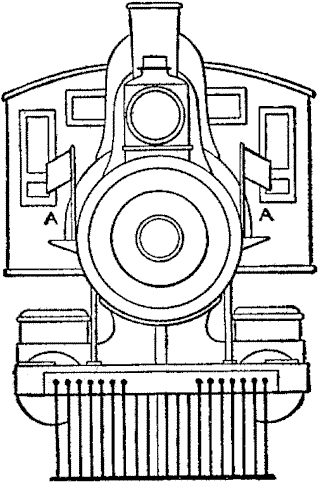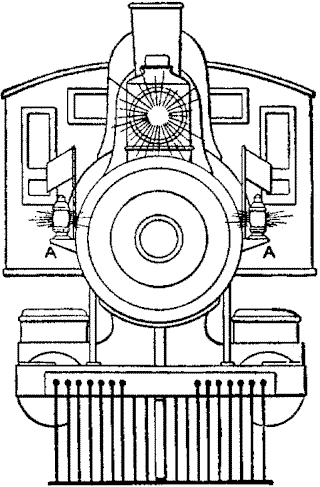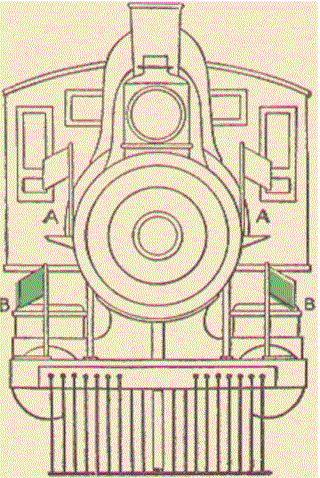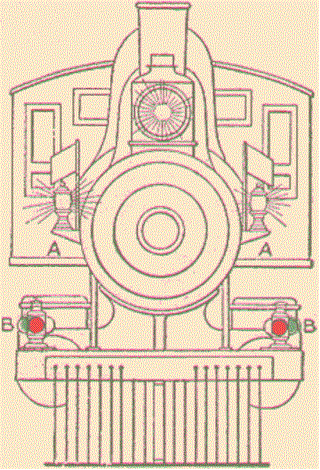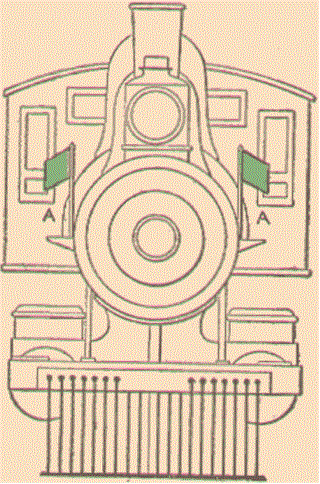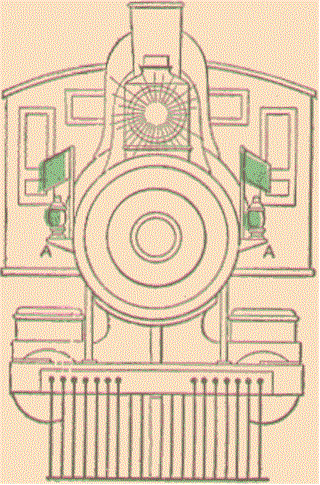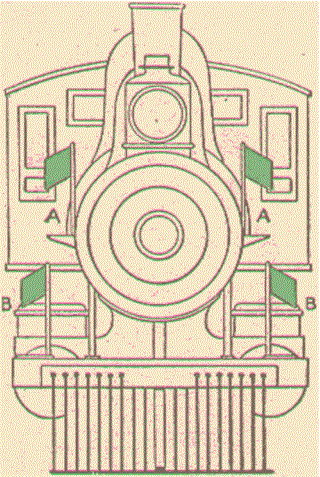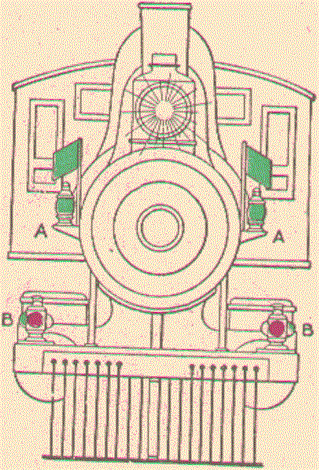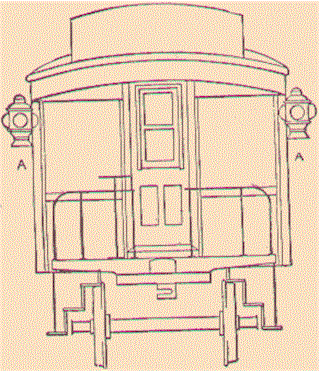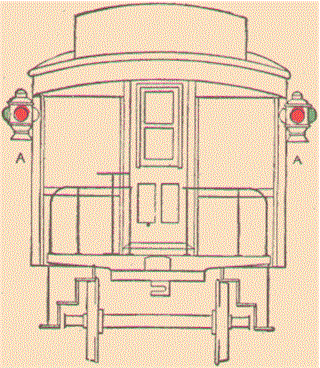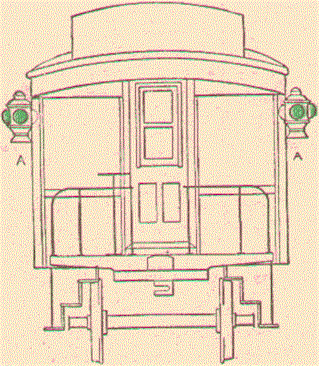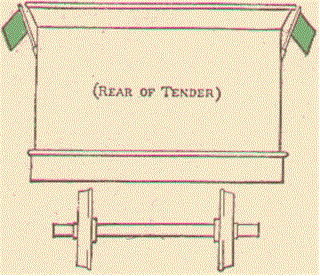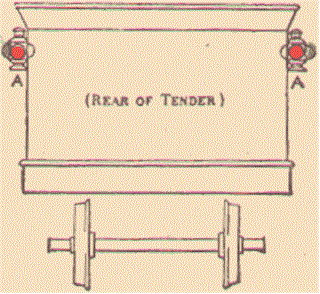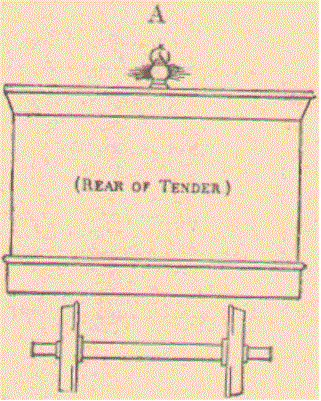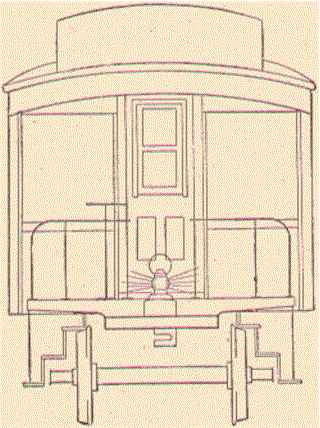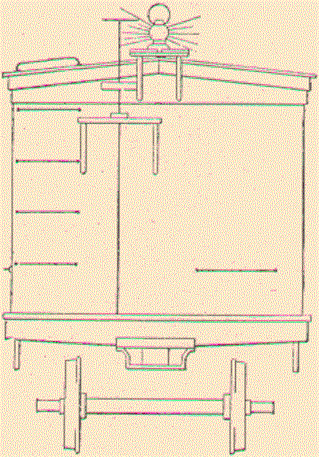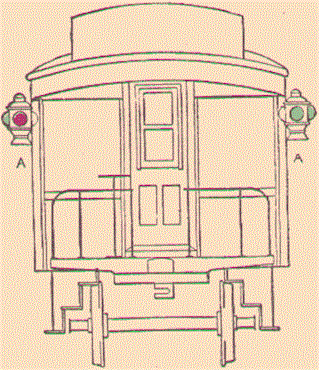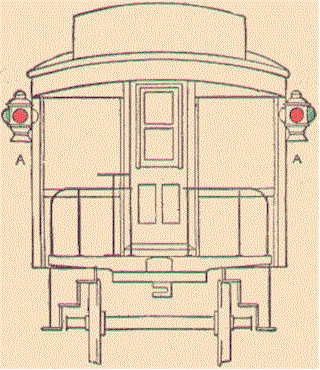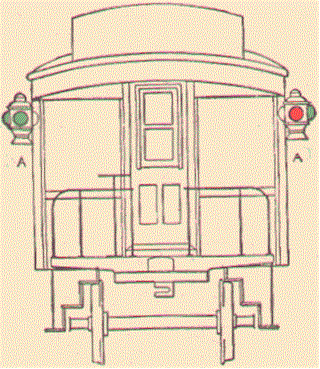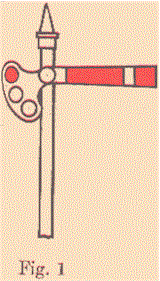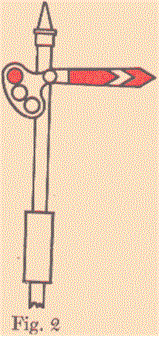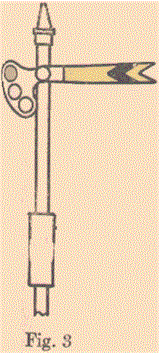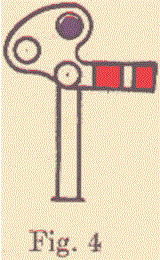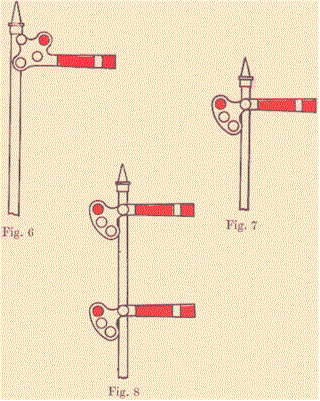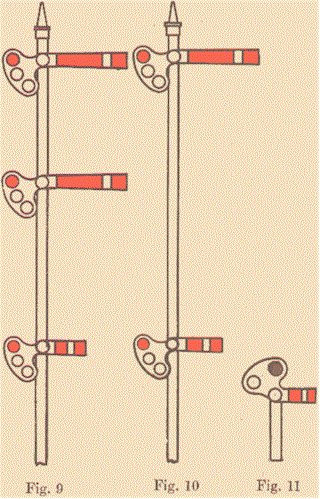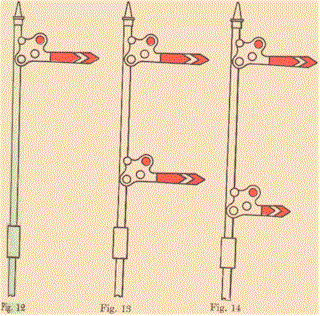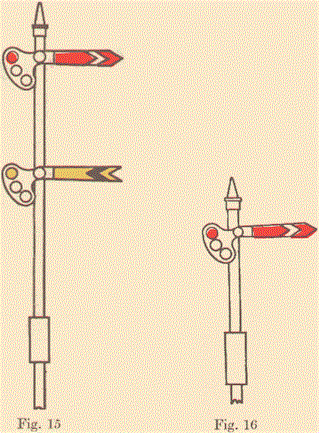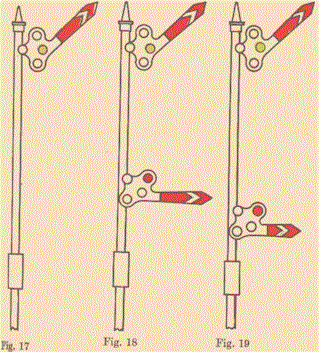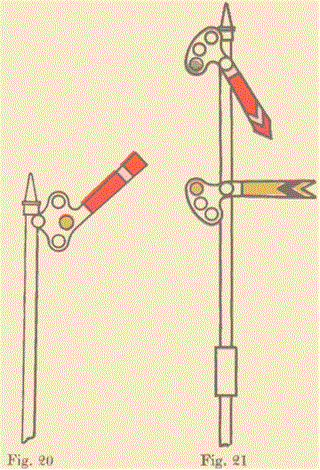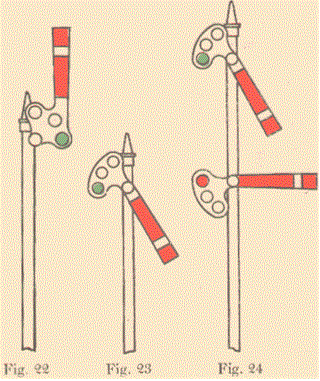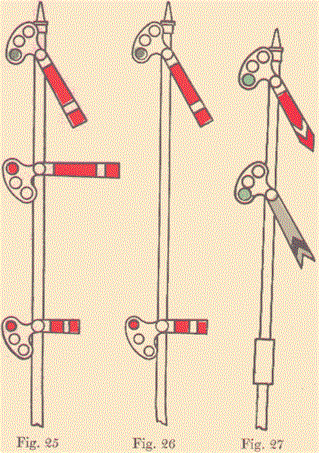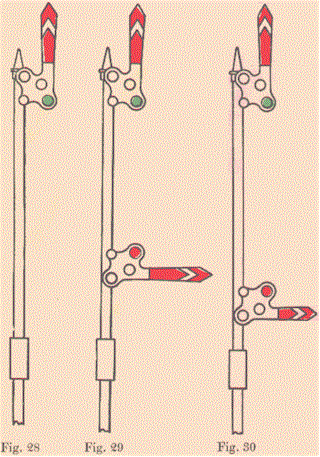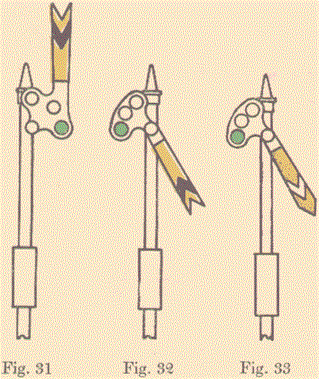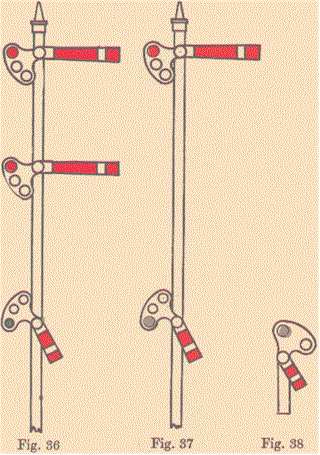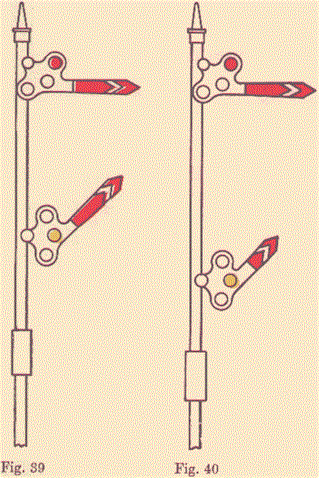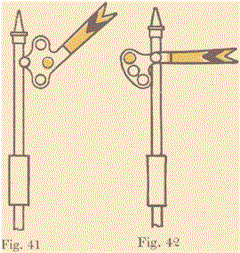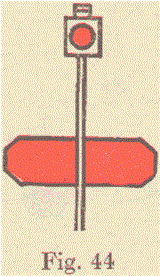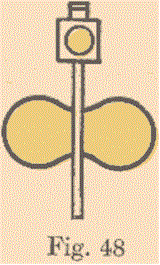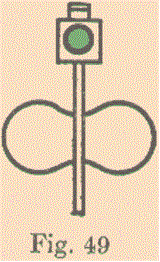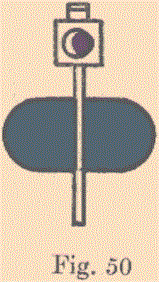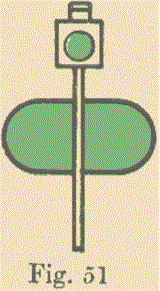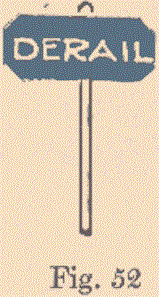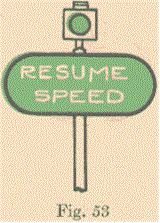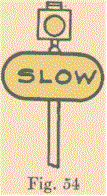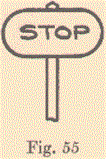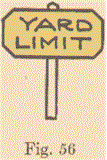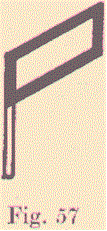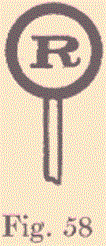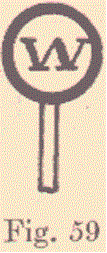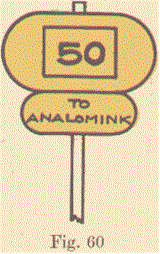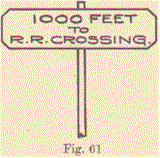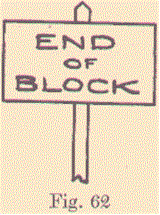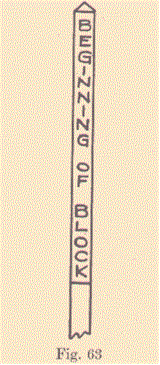|
SUBDIVISION.-A portion of a division so designated by time-table.
MAIN TRACK.-A track extending through yards and between stations, upon which trains are operated by time-table or train order, or both, or the use of which is governed by block signals.
SINGLE TRACK.-A main track upon which trains are operated in both directions.
DOUBLE TRACK.-Two main tracks, upon one of which the current of traffic is in a specified direction, and upon the other in the opposite direction.
THREE OR MORE TRACKS.-Three or more main tracks, upon any of which the current of traffic may be in either specified direction.
CURRENT OF TRAFFIC.-The movement of trains on a main track, in one direction, specified by the rules.
STATION.-A place designated on the time-table by name, at which a train may stop for traffic; or to enter or leave the main track; or from which fixed signals are operated.
SIDING.-A track auxiliary to the main track, for meeting or passing trains.
SIDE TRACK.-A track auxiliary to the main track, for purposes other than for meeting or passing trains.
FIXED SIGNAL.-A signal of fixed location indicating a condition affecting the movement of a train.
YARD.-A system of tracks within defined limits pro-
NOTE to DEFINITION of FIXED SIGNAL.-The definition of Fixed Signal covers such signals as switch targets, train order, block, interlocking, semaphore, disc, banner, ball or other means for displaying indications that govern the movements of trains; also, SLOW, STOP, RESUME SPEED and YARD LIMIT signs.
|
|
|
vided for the making up of trains, storing of cars and other purposes, over which movements not authorized by time-table, or by train order, may be made, subject to prescribed signals and rules, or special instructions.
YARD ENGINE.-An engine assigned to yard service and working within yard limits.
PILOT.-An employe assigned to a train when the engineman or conductor, or both, are not fully acquainted with the physical characteristics, or rules of the railroad, or portion of the railroad over which the train is to be moved.
PILOT ENGINE.-An engine in charge of a person acting as pilot authorized to move trains around an obstruction.
TRAIN REGISTER.-A book or form which may be used at designated stations for registering signals displayed, the time of arrival and departure of trains and such other information as may be prescribed.
STANDARD TIME
1. Standard time obtained from Washington, D. C., observatory, will be transmitted to all points from designated offices at 12.00 M. daily.
2. Watches that have been examined and certified to by a designated inspector as being of the prescribed standard must be used by Trainmasters, Yardmasters, Conductors, Enginemen, Train Flagmen, Road Foremen of Engines, Yard Engine Foremen, Station Masters, Agents and Operators handling train orders; Signalmen, Supervisors, Inspectors, Maintainers, and Repairmen of signals; Roadmasters, Track Supervisors, Track Foremen, Foremen of Bridges; all persons authorized to move motor cars, velocipedes, hand cars
|
|
